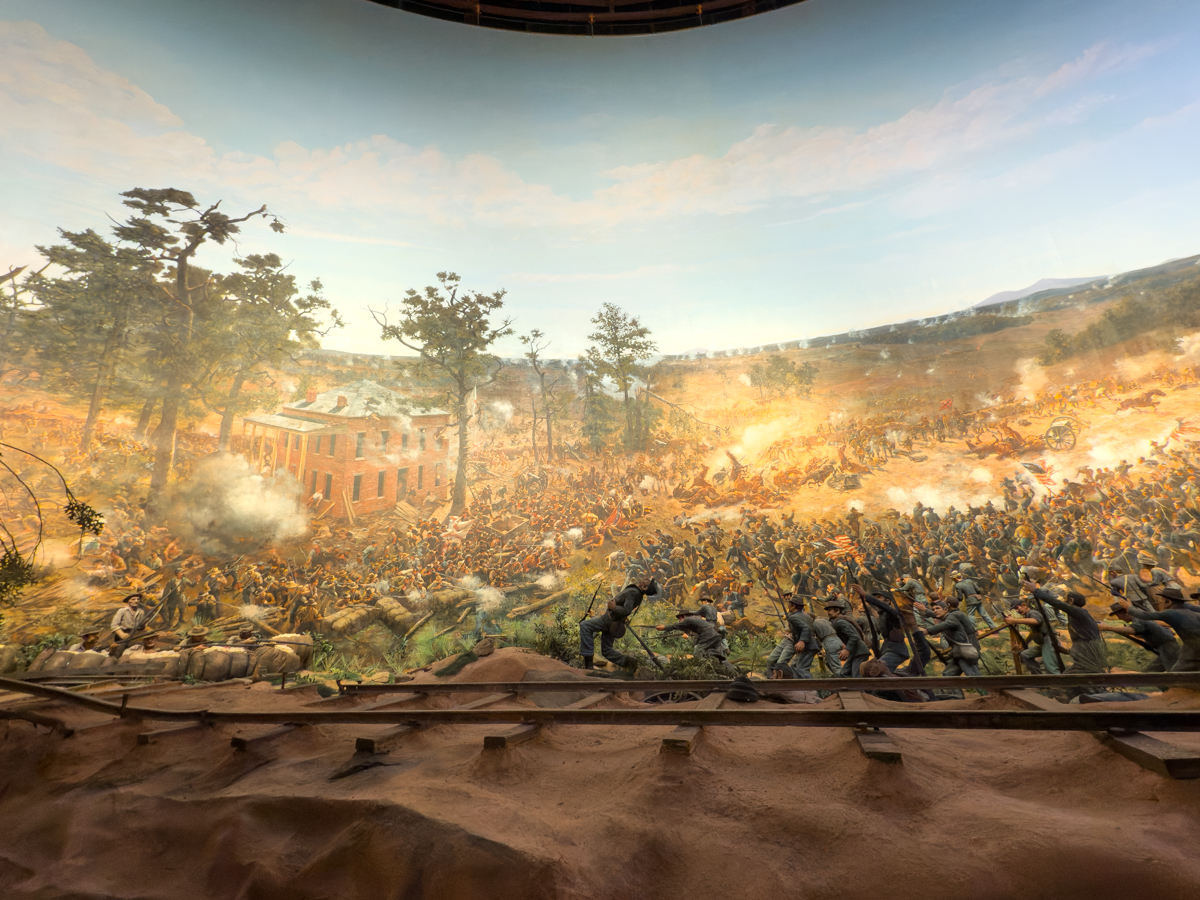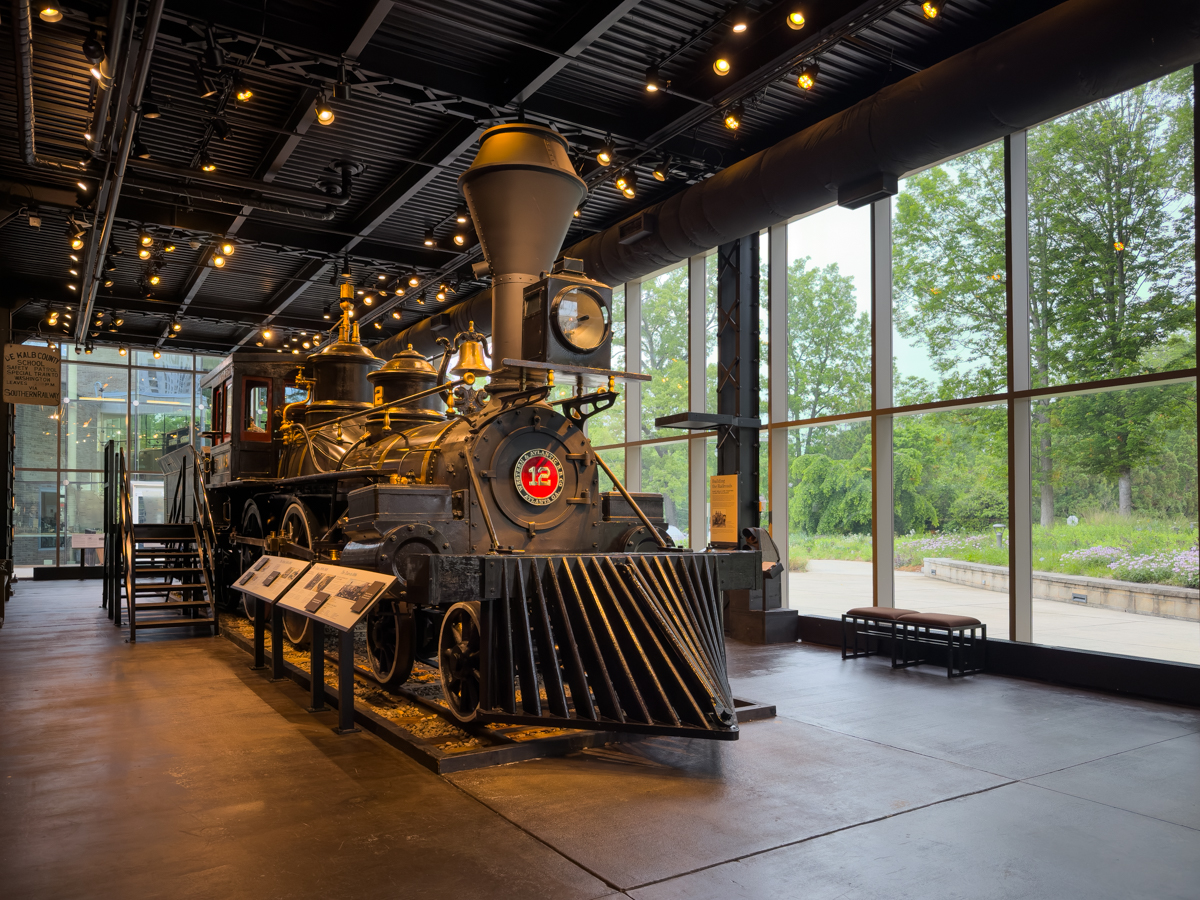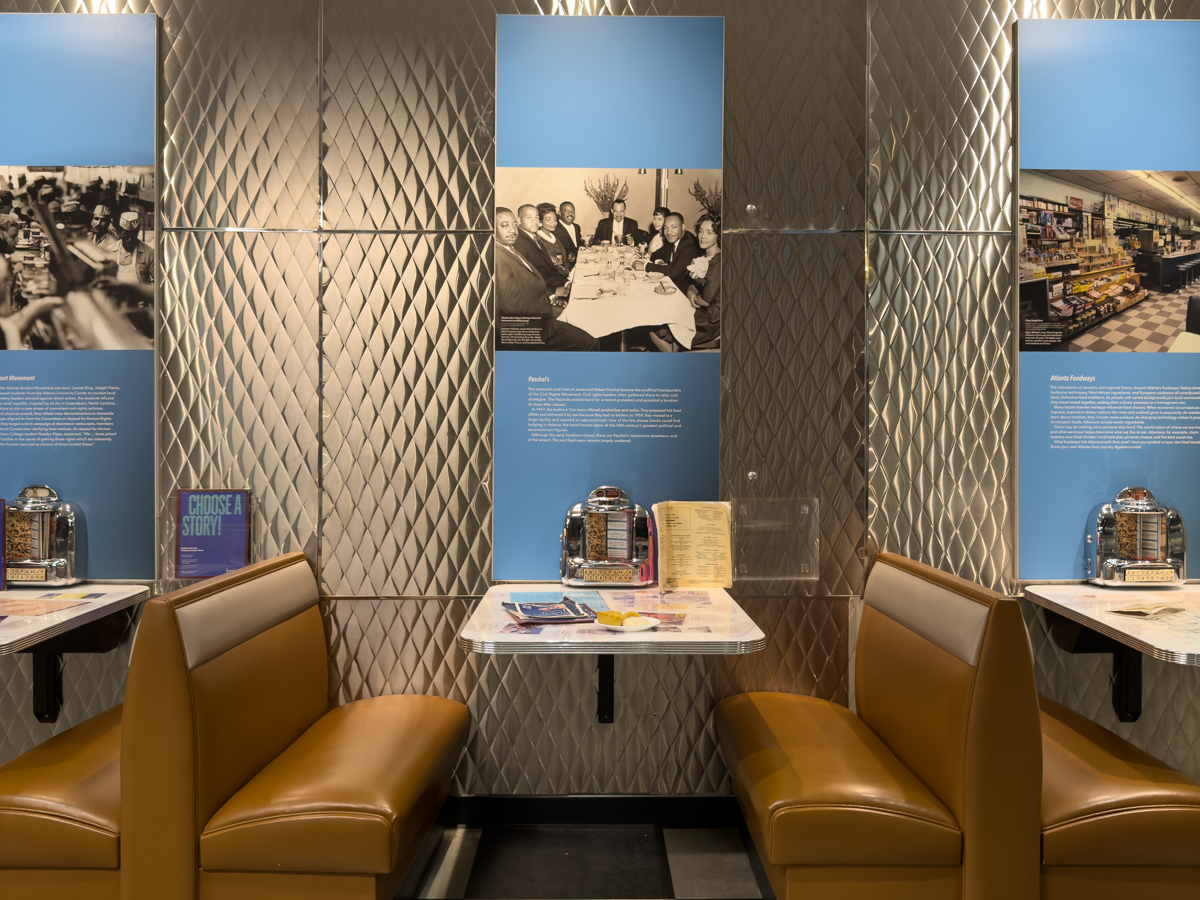

Above: Gatheround Exhibit – Urban Growth. Photo credit: Julie Diebolt Price
Tucked into the Buckhead neighborhood of Atlanta, Georgia, the Atlanta History Center offers more than exhibitions behind glass—it's a dynamic, 33-acre campus where Southern history comes to life through immersive exhibits, preserved homes, and expansive gardens. I visited expecting a typical regional history museum. I discovered that Atlanta's identity is shaped by the stories of its people, their struggles, and their triumphs.
One of the most compelling features at the Atlanta History Center is the Cyclorama, a 360-degree, hand-painted panoramic rendering of the 1864 Battle of Atlanta. This captivating story comes alive with a 12-minute film projected onto the painting every hour. It was unusual to experience such an old-fashioned visual and sound scenario.
Standing inside the circular exhibit, accessed by an escalator on the second level, surrounded by light, sound, and storytelling, I felt drawn into a pivotal moment of the Civil War. Originally painted in the 1880s, the meticulously restored Cyclorama reinterprets the historical context rather than mythology, enabling visitors to reflect critically on the legacy of the Civil War.

I couldn't help but think of the movie Gone With the Wind by Margaret Mitchell as I experienced the Cyclorama.
Permanent exhibits at the Atlantic History Center delve into complex topics in depth.
Turning Point: The American Civil War showcases over 1,500 artifacts from the Union and Confederate forces, ranging from rifles to personal letters. The gallery doesn't glorify war—it humanizes it. Exhibits explore the lives of soldiers, civilians, and enslaved people, vividly showing how the war ripped families and communities apart.
The restored locomotive, Texas, was a highlight in the Atlanta History Center. Built in 1856 but restored to resemble its appearance in 1886, the Locomotion: Railroads and the Making of Atlanta exhibit uses the cab to symbolize the city's origins as a railroad hub and its growth into a commercial capital. Patrons can climb aboard the cab.

Another favorite of mine was Gatheround: Stories of Atlanta, a celebration of the city's diverse cultural threads. Through oral histories, photographs, and interactive displays, this exhibit showcases the voices of every corner of Atlanta—black entrepreneurs, immigrant families, civil rights leaders, and everyday citizens who shaped the city into what it is today.

Three historic houses reveal elegant and rustic glimpses into antebellum life. The Swan House, an elegant 1928 mansion featured in The Hunger Games, features a sweeping staircase and period furnishings that transport you back to Atlanta's post-war resurgence—guided tours are available on the ground floor.
The Smith Family Farm offers a glimpse into the life of a 19th-century farm. Costumed interpreters lead patrons through real historic buildings and gardens.
Surrounding it all are Goizueta Gardens — a 33-acre landscape featuring nine distinct gardens, including preserved woodland, diverse plant collections, and heritage-breed animals. The gardens:
One exhibit I enjoyed was “Atlanta '96,” which honors the city's role in hosting the Summer Olympics. From Olympic torches to iconic uniforms, the collection captures the spirit and civic pride of the Games.
Even the museum shop and on-site café reflect the Atlanta History Center's commitment to culture and community, offering locally made goods and a welcoming place to rest between exhibits.
Goizueta Children's Experience
The Atlanta History Center's primary play space for children is the Goizueta Children's Experience, a 5,000-square-foot, immersive, and interactive exhibit designed for children from crawlers (ages 1-3) up to second graders (ages 6-8).
Victorian Playhouse
The Victorian Playhouse is a playful artifact and an architectural curiosity, showcasing ornate woodwork and fanciful details scaled down to child-size proportions.
Lee Playhouse and Playground
A child-centric structure, the Lee Playhouse is nestled among the gardens and historic buildings of the Center.
The Atlanta History Center excels at revealing the many sides of a city often viewed through a single lens. It's a place where history is alive—spoken, sung, preserved, and presented in all its complexity. Whether you're a local Atlantan or a history-loving traveler like my husband and me, set aside at least half a day. You'll leave with a deeper understanding of Atlanta—and maybe even of America itself.
What I liked best: The depth of historical documentation across every era and exhibit. It's not just what's shown—it's how thoughtfully it's told.
Atlanta History Center and Discover Atlanta hosted my husband and me. However, all opinions are my own.
The campus is large but well-marked, with helpful staff and plenty of places to sit, wander, or linger.
Atlanta History Center Buckhead hours: Tuesday to Sunday from 9 a.m. to 4 p.m.
Free parking at the on-site parking deck.
Atlanta History Center
130 W Paces Ferry Rd NW, Atlanta, GA 30305
(404) 814-4000
* * *

Julie Diebolt Price is a seasoned photographer, author, and travel writer with over 35 years of experience. Her diverse career spans travel, documentary, corporate, stock, and event photography.
As a business entrepreneur, she leverages her extensive experience in various industries to teach aspiring photographers and business owners the essentials for success.
Julie focuses on what matters, learns by doing, and isn’t afraid to break a rule or two along the way.
Learn more at PhotoTravelWrite.com.
julie@jdpphotography.com